 tr.istanbulbeylikduzuescort.com
tr.istanbulbeylikduzuescort.com
Everyone knows that broad shoulders are an attribute of strength and masculinity, and qualitatively elaborated deltoid muscles are the calling card of any real bodybuilder. It is the deltoids that can demonstrate the level of mastery of a bodybuilder and answer the question: is he an amateur or a professional?
How to Build Your Shoulders
Despite the fact that the shoulder joint is the most active and mobile in the human body, it is not so easy to train the muscles of the shoulder. And this is explained precisely by the increased mobility of this part of the body. When you develop the shoulders, it is always possible to transfer the load to other muscles, which is an integral feature of these joints.
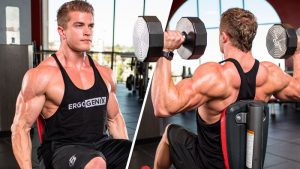
How to build your shoulders with push-ups
To understand why it is necessary to do these, we will explore the functionality of these muscles. The shoulders are unique.
The shoulders are connected to the thoracic and the widest muscles.
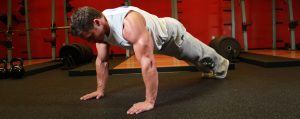
Muscles of the shoulder consist of three bundles: front, middle and posterior. To build rounded deltoids, you need to pay attention to each of them. Especially the back, since most people have a weak spot.
Push-ups are a traditional exercise for the chest. However, in several variations, the load shifts to the anterior and middle parts of the deltoid muscle. The rear does not get worked at all, so you’ll have to train it separately. Now we will analyze three kinds of push-ups for shoulders:
The three types
- Push-ups with a shift in gravity.
Lay face down. Hands are slightly wider than the shoulders, legs are brought together, the back is straight. Raise one leg and hold. Carry out a preset number of push-ups. Such a position will shift the load to the deltoids.
- Push-ups with feet on an incline.
This is a more complex version of the first exercise. Place both feet on a table or window sill. Keep your back straight, put your hands forward for stability. The higher the legs are, the more the muscles of the shoulders will be worked.
- Vertical push-ups.
This is an incredibly difficult exercise for real fans of home fitness. The initial position is the lying with your feet against the wall. Place your hands on the floor at shoulder width, and climb your feet up the wall.
Types of exercises for building your shoulders
In order to properly build the shoulders and at the same time not injure them, it is always necessary to start with a warm-up. This is very important, as building shoulders with large weights can cause shoulder injury. This is very common among bodybuilders. Warm up is best done in a circular rotation of the arms. Continue this exercise with light dumbbells. When you feel that your shoulders are warmed up properly, you can start heavy, basic exercises.
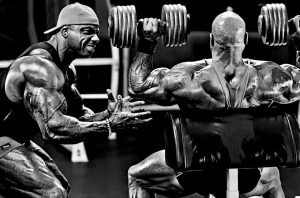
Consider an exercise like a classic bench press.
This exercise works the front bundle of brachial muscles. Thus, the bench intended for the development of the thoracic group becomes a good exercise and builds the anterior deltoid muscles. But, the bench press does not give the opportunity to act entirely on the entire deltoid muscle, which also includes the middle and posterior fascicles (deltoids). So, the bench press is not a replacement for building shoulders. In addition, if you do a bench press, focused on the shoulders, your pectoral muscles will not benefit.
A classic exercise on the shoulders is a standing barbell press to the chest. But, it also has some drawbacks.
The fact is that when performing it, it can be difficult to observe the correct technique and completely eliminate a rounded back. In this case, the whole body is aimed at opposing weight, and the work of deltoid muscles is practically lost . For this reason, it is recommended that you perform the exercise in the sitting position. However, this method does not always work. Of great importance here is the length of the hands and the individual characteristics of the technique. It is likely that most of the training effort will be on the trapezoid muscles and triceps, and the deltoid again will not get anything.
Effort is needed to give the shoulders a good load.
This exercise really removes the prospect of unwanted lumbar flexure and loads the shoulders well (in particular, the middle deltoid). However, it poses some risk, because not all athletes have well developed joint flexibility. This is especially important for beginners and people over 30 because joint mobility decreases with age.
Having well mastered the press standing from the chest and press from behind the head, you can try your hand at exercise combining both options. The essence of it consists in an alternating standing press. To realize all its positive aspects, you need to learn new techniques. The bar is raised up from the chest, then falls over the head to the level of the ears, then up again.
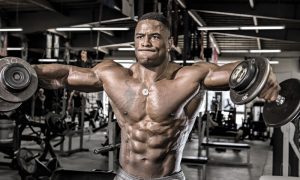
Of course, this exercise is recommended only for experienced athletes who have mastered both the first and second methods. It also is absolutely safe. It also has an excellent advantage: it builds all the deltoids at once.
Because of the changing trajectory during the exercise, it is recommended that you give preference to moderate weights, which are also highly effective. The heavier weights will not allow you to feel the movement properly and will increase the danger of injury.
Alternating methods reduces the likelihood of incorrect movements, since the load on all muscles will stabilize your position. Together, all factors will maximize the training tension of the deltoid. All deltoids will be forced to join at full strength.
The bench press can be done as a basic exercise that starts a complex training of shoulder muscles. Or, you can leave it for the end. In the latter case, you should reduce the weight even more, by 20 percent. After all, your previous exercises have already done all the work, and you just have to finish the final repetitions.

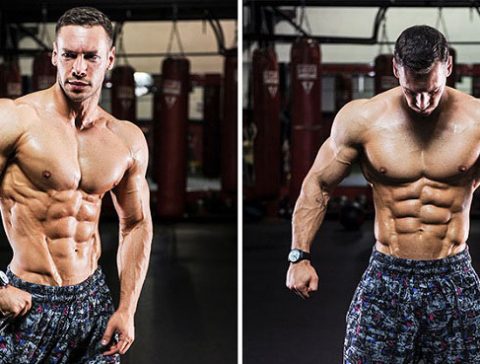




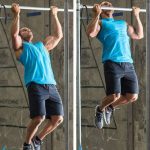




comments (0)